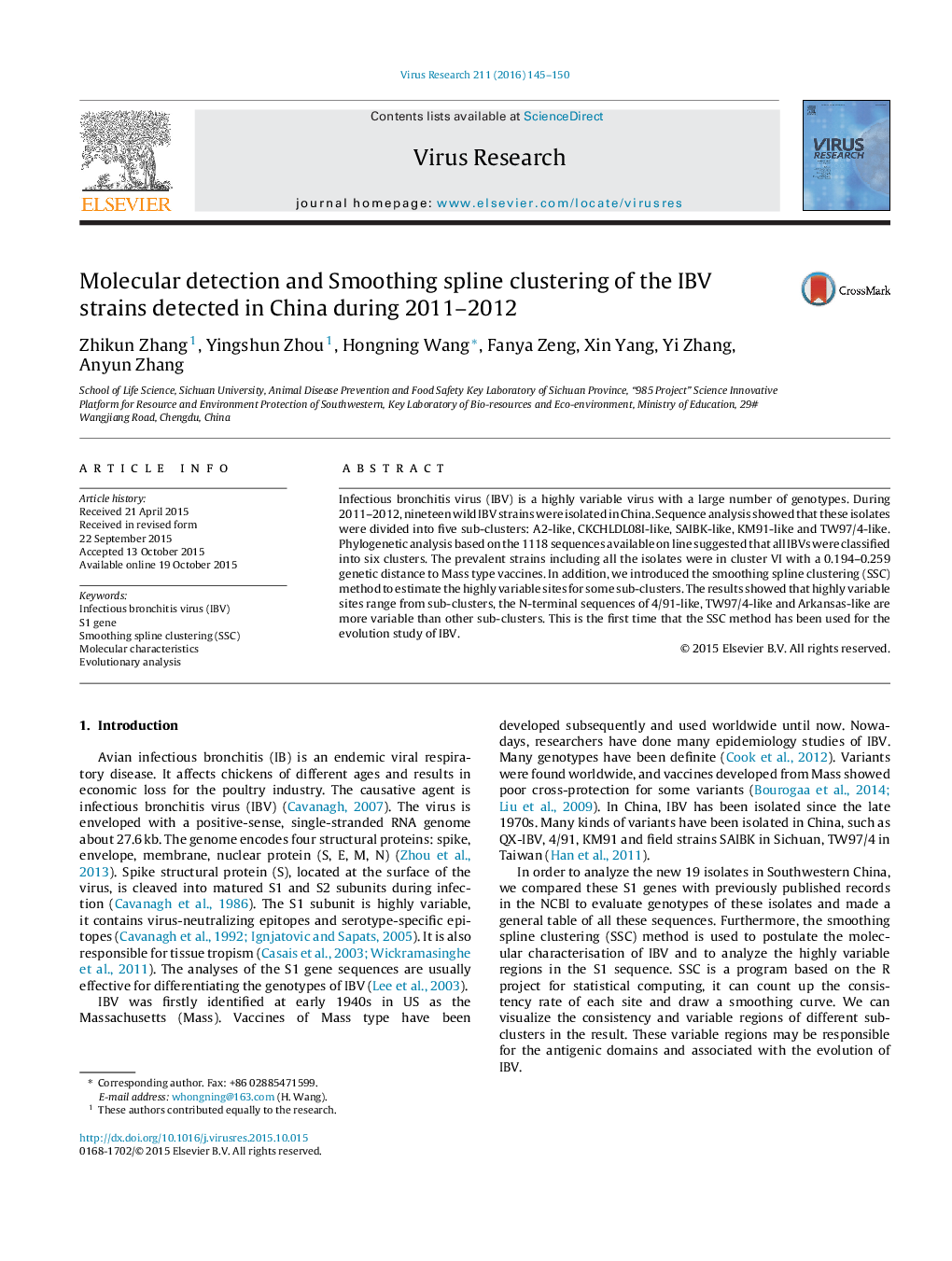| Article ID | Journal | Published Year | Pages | File Type |
|---|---|---|---|---|
| 3427984 | Virus Research | 2016 | 6 Pages |
•We isolate 19 infectious bronchitis viruses in China, they are quite different from the Mass type vaccine strains.•By phylogenetic analysis, these strains were classified in five subclusters A2-like, CKCHLDL08I-like, KM91-like, SAIBK-like and TW97-4-like.•The tree of all the 1137 sequences revealed that the prevalent strains of IBV are in cluster VI.•We introduce the smoothing spline clustering (SSC) to analysis the consistency of each nucleotide along S1 gene.•The smoothing spline clustering (SSC) showed that the N-terminal of S1 is responsible for the evolution of IBV.
Infectious bronchitis virus (IBV) is a highly variable virus with a large number of genotypes. During 2011–2012, nineteen wild IBV strains were isolated in China. Sequence analysis showed that these isolates were divided into five sub-clusters: A2-like, CKCHLDL08I-like, SAIBK-like, KM91-like and TW97/4-like. Phylogenetic analysis based on the 1118 sequences available on line suggested that all IBVs were classified into six clusters. The prevalent strains including all the isolates were in cluster VI with a 0.194–0.259 genetic distance to Mass type vaccines. In addition, we introduced the smoothing spline clustering (SSC) method to estimate the highly variable sites for some sub-clusters. The results showed that highly variable sites range from sub-clusters, the N-terminal sequences of 4/91-like, TW97/4-like and Arkansas-like are more variable than other sub-clusters. This is the first time that the SSC method has been used for the evolution study of IBV.
